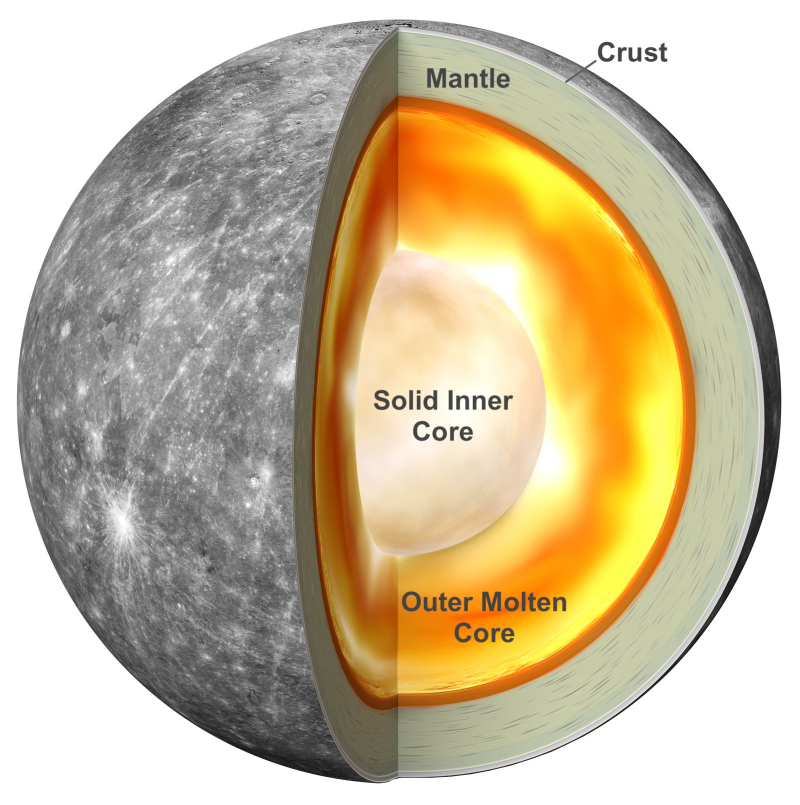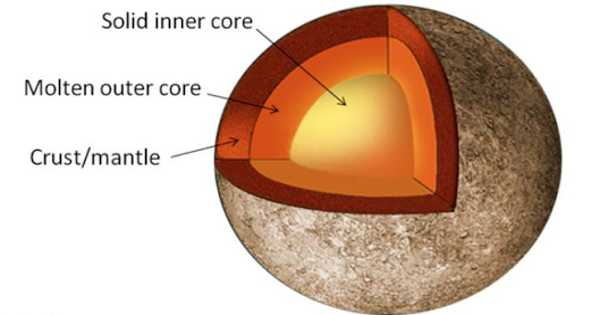Mercury Has A Molten Core.
NASA scientists have recently arrived to the conclusion that Mercury's solid iron core may actually be liquid. A 500–700 km thick silicate-based mantle surrounds the core. The core of smaller planets often cools quickly, but considerable research revealed that the results did not match what would be expected from a solid core. The core is currently thought to contain a lighter element, such sulfur, which would cause the material to melt at a lower temperature. The core of Mercury is thought to account about 42% of its volume, compared to 17% for the Earth.
The planet's surface wrinkled as the iron core of the planet cooled and shrank. These creases are referred to as Lobate Scarps by scientists. These Scarps can stretch for hundreds of kilometres and reach heights of up to a mile.
Many theories have been put up to explain why Mercury's core has more iron than any other major planet in the Solar System. The most popular idea proposes that Mercury once had a mass 2.25 times greater than it does now, a metal-silicate ratio similar to common contrite meteorites, which are assumed to be indicative of the rocky material in the Solar System. Mercury may have been impacted by a planetesimal that was several thousand kilometers large and around 1/6 of Mercury's mass early in the Solar System's existence. The core would have remained as a reasonably significant component after most of the original crust and mantle were taken away by the collision.










